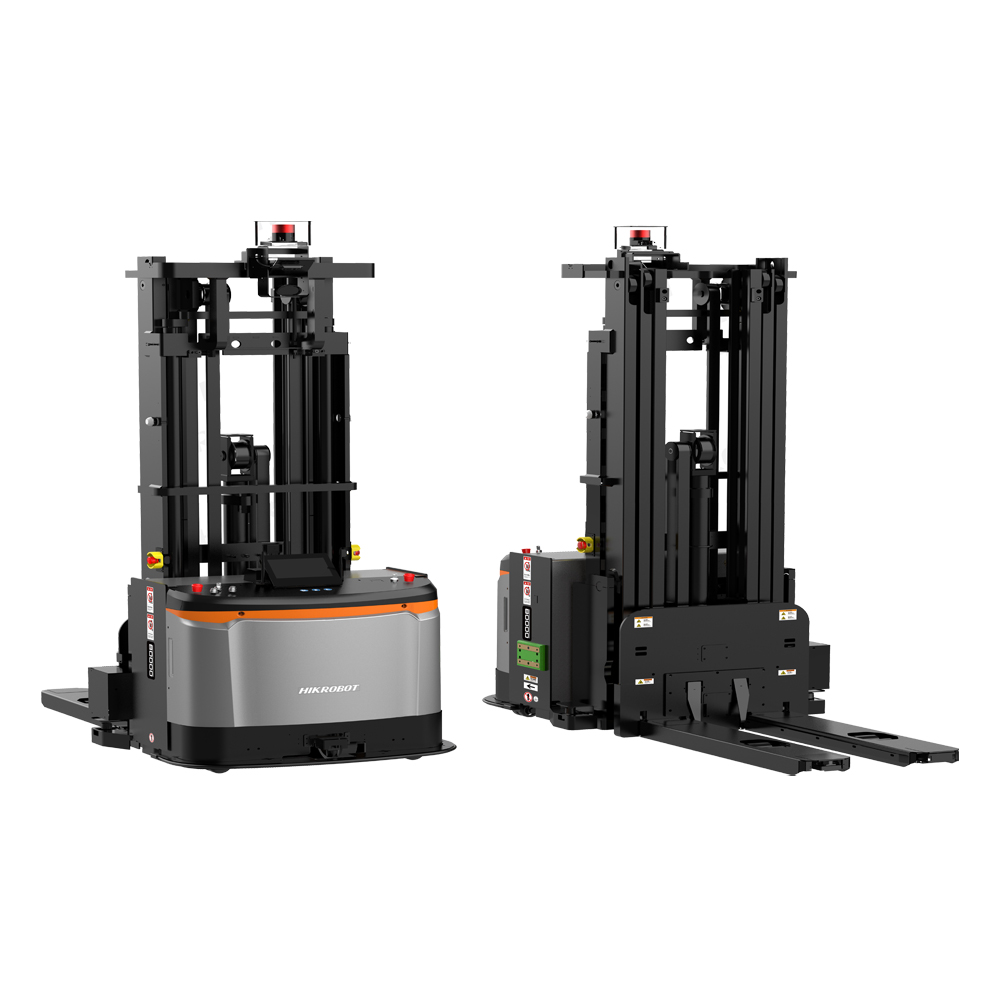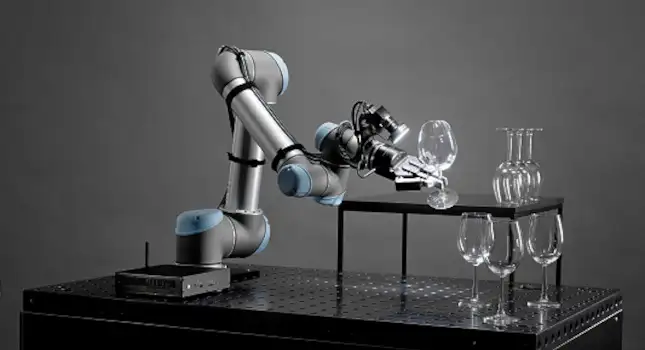
In the busy world of online shopping and supply chain management, storage facilities face huge pressure to deliver quicker, more exact, and cheaper operations. Growing workforce expenses, combined with worker shortages and rising customer expectations, have made old warehouse methods hard to sustain. Autonomous Mobile Robots (AMRs) are changing the storage industry by taking over routine jobs, boosting effectiveness, and greatly lowering workforce costs. This blog explores how AMRs achieve these savings while increasing output, safety, and growth potential, helping warehouse operators stay competitive in a fast-changing market.
The Growing Challenge of Labor Costs in Warehousing
Warehousing needs many workers, with jobs like gathering, organizing, and moving items requiring substantial human effort. Yet, several problems are pushing up expenses and making work harder:
Worker Shortages:
The worldwide supply chain sector faces a constant lack of skilled people. This makes it tough to meet daily needs.
Increasing Pay:
Rising workforce expenses, especially in areas needing many storage workers, strain finances.
High Turnover:
Routine and physically hard jobs cause employee exhaustion and frequent quitting. This raises hiring and teaching costs.
Mistake-Prone Methods:
Human handling often leads to errors like wrong picks or lost stock. These cause expensive fixes and slowdowns.
These problems show the need for new answers like AMRs. They make work smoother and lessen dependence on human effort.
What Are Autonomous Mobile Robots?
Autonomous Mobile Robots (AMRs) are smart machines built to move through busy storage spaces. They do jobs like gathering, moving, and arranging items. Unlike older Automated Guided Vehicles (AGVs) needing fixed tracks, AMRs use modern sensors, AI, and movement tech like Simultaneous Localization and Mapping (SLAM). They travel independently and adjust to real-time shifts around them.
Key Features of AMRs
Modern Movement:
SLAM and laser-based guidance ensure exact travel, even in packed or shifting areas.
Instant Adjustment:
AMRs adapt to layout changes or blockages without needing physical changes.
Connection Abilities:
AMRs link smoothly with Warehouse Management Systems (WMS) and Enterprise Resource Planning (ERP) systems for efficient work.
Power Savings:
Designed for sustainability, AMRs use less energy than fuel-run gear.
By taking over routine jobs, AMRs let warehouses move people to more valuable roles. This directly tackles workforce cost problems.
How AMRs Reduce Labor Costs in Warehousing
AMRs offer a multi-layered way to cut costs. They take over key methods, reduce mistakes, and improve work effectiveness. Below are the main ways AMRs make these savings:
1. Taking Over Routine Jobs
AMRs handle time-heavy tasks like stock movement, order gathering, and restocking. For example, machines can carry goods across a warehouse. This removes the need for people to walk long distances. This change cuts work hours a lot.
Example:
A warehouse using AMRs can lower manual gathering time by up to 50%. This lets workers focus on complex jobs like quality checks or customer help.
Effect:
Research indicates AMRs can reduce workforce expenses by 30-40% over five years. They lessen the need for humans in repetitive jobs.
2. Reducing Mistakes and Fixes
Human methods often cause errors. These include gathering wrong items or losing stock. Such errors lead to costly repairs. AMRs, fitted with AI and barcode reading, ensure near-total correctness.
Gathering Correctness:
AMRs reach picking exactness levels of 99% or better. This cuts errors needing extra work to fix.
Stock Monitoring:
Real-time tracking lowers overstocking or shortages. This stops wasteful work on stock checks.
3. Boosting Output
AMRs work 24/7 without rests, tiredness, or stops. This greatly increases output speed. For example, Amazon’s use of over 200,000 robots raised warehouse output by up to 50%. This allows fewer workers to manage larger goods volumes.
Speed Increase:
AMRs can double a warehouse’s output speed. They do this by smoothing material flow and lowering hold-ups.
Growth Potential:
In busy seasons, AMRs grow operations without hiring extra people. This saves on hiring and training costs.
4. Bettering Workplace Safety
Routine and risky jobs, like lifting heavy items or driving forklifts, bring big safety dangers. AMRs lower these dangers by handling hazardous tasks. This reduces injury rates and linked costs.
Safety Effect:
Using AMRs can cut workplace accidents by up to 70%. This lowers injury claims and work stoppages.
Forklift Alternative:
Forklift-related accidents cause thousands of injuries yearly. AMRs offer a safer choice for material transport.
5. Improving Worker Placement
By changing routine tasks, AMRs free staff for strategic roles. These include process improvement or customer talks. This shift improves job happiness and lowers quitting rates. This further reduces hiring costs.
Staff Contentment:
Collaborative AMRs, made to work with people, improve job positions. They do not replace them. This builds a better work setting.
Cost Reductions:
Less quitting cuts hiring and teaching costs. These can make up 20-30% of workforce expenses in high-turnover warehouses.
Cost Savings Breakdown
| Area of Savings | Impact of AMRs | Estimated Savings |
| Work Hours | Changes routine jobs | 30-40% over 5 years |
| Mistake Repair | Lowers gathering and stock errors | 10-15% cost reduction |
| Hiring & Training | Cuts quitting and extra hiring needs | 20-25% savings |
| Workplace Safety | Reduces accidents and claims | Up to 70% reduction |
Real-World Applications of AMRs in Warehousing
AMRs are flexible. They meet the needs of various sectors, from online shopping to car making. Below are examples of how AMRs cut workforce costs in different areas:
Online Shopping Fulfillment
In high-volume online shopping warehouses, AMRs speed up order handling by 30%. By linking with WMS, these machines give instant stock updates. This reduces manual stock checks and speeds up fulfillment.
Retail Warehousing
Retail warehouses with narrow paths gain from small AMRs. They move through tight spots and restock shelves well. This lessens the need for workers to do repeated stocking jobs. It saves work hours.
Cold Storage Facilities
In harsh places like cold storage, AMRs keep output steady. Human workers need frequent breaks due to extreme cold. AMRs do not. This ensures steady work with minimal workforce costs.
Wesar Intelligence: Your Trusted AMR Supplier

Wesar Intelligence Co., Ltd. is a top provider of Autonomous Mobile Robots and smart storage answers. They help businesses improve work and cut workforce costs. Focusing on green smart logistics, Wesar offers a full product line. This includes AMRs, WMS, and Automated Storage and Retrieval Systems (ASRS). Their answers fit industries like online shopping, car making, and electronics production. They ensure smooth links with current systems through open APIs. Backed by a skilled team and strong after-sales help, Wesar empowers warehouses to reach efficiency, sustainability, and growth potential.
Challenges and Solutions for AMR Adoption
While AMRs offer big gains, using them brings difficulties. Here’s how Wesar tackles them:
Link Complexity:
Wesar’s AMRs have open APIs for smooth links with WMS and ERP systems. This minimizes connection problems.
High Starting Costs:
The return on investment (ROI) for AMRs usually comes in 12-24 months. Savings come from lower workforce costs and higher output.
Worker Worry:
Wesar’s collaborative machines work with people. They improve job positions and lessen fear of job loss.
Moving in Busy Spaces:
Advanced SLAM movement ensures Wesar’s AMRs work safely and well in active warehouses.
Заключение
Autonomous Mobile Robots are transforming warehousing. They tackle worker shortages, reduce expenses, and boost effectiveness. By changing routine tasks, cutting errors, and improving safety, AMRs let warehouses work better with fewer resources. Wesar Intelligence’s advanced AMRs provide custom answers. These link smoothly with current systems. They offer a lasting way to cost savings and growth. Investing in AMRs is not just about cutting costs. It positions your warehouse for lasting success in a competitive market.
FAQs
How do Autonomous Mobile Robots reduce workforce costs in warehousing?
AMRs change routine jobs like gathering and moving goods. This lessens the need for human effort. This can cut workforce costs by 30-40% over five years. It also improves speed and exactness.
Are AMRs good for small warehouses?
Yes, AMRs can grow and adjust. This makes them perfect for warehouses of all sizes. Small models from Wesar Intelligence can move in tight spaces. This improves work in smaller sites.
How do AMRs improve workplace safety?
AMRs handle dangerous jobs like heavy lifting. This cuts workplace injuries by up to 70%. Their modern movement systems ensure safe work in busy places.
What is the ROI time for using AMRs?
Most warehouses see a return on investment in 12-24 months. This comes from lower workforce costs, fewer errors, and higher output.
Can AMRs link with current warehouse systems?
Yes, Wesar’s AMRs have open APIs. This allows smooth links with Warehouse Management Systems (WMS) and Enterprise Resource Planning (ERP) systems for efficient work.








